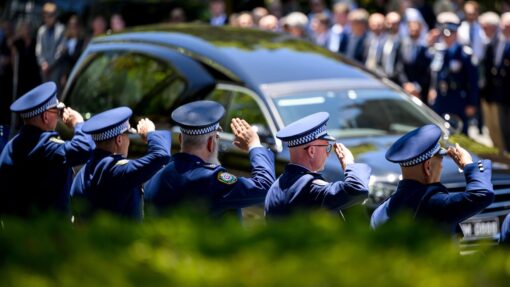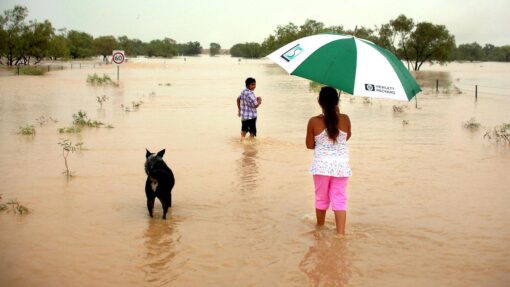Australian artist John Olsen painting till the end
Liz Hobday |

Acclaimed Australian artist John Olsen is being remembered as a “poet of the brush”.
Known for changing the way people viewed the Australian landscape, the celebrated painter died peacefully at age 95 on Tuesday at his home in the NSW Southern Highlands.
Born in Newcastle, Olsen’s career spanned more than 60 years, his work exhibited in galleries across the nation and overseas.
He was a giant who never lost the twinkle in his eye, Prime Minister Anthony Albanese said in an online statement on Wednesday.
“A man of talent, charisma, generosity and humility, he was a poet of the brush, a truly great explorer and interpreter of the Australian landscape,” he said.
“We were so lucky to have him.”
Olsen won the nation’s major art awards across almost 40 years, including the Archibald, Wynne and Sulman prizes.
His children Louise and Tim Olsen said their father was a bon vivant and raconteur known for his quick wit and rakish beret.
“Our father was a titan of the art world and beloved by many in Australia and overseas but to us he was Dad, in all the wonderful humaneness, complexity and humanity that word encapsulates,” they said in a statement.
Olsen was still painting in his studio on Saturday.
“Painting was our father’s life and he was painting right up to the last in his studio, with friends calling in to see him which he always loved,” his children said.
Among the artist’s acclaimed works is Salute to Five Bells, which hangs inside the Sydney Opera House.
A tribute to his long career – planned before his death – will be beamed onto the building’s sails during May’s Vivid Sydney festival.
Olsen had planned to watch the light show from a plush Sydney hotel room surrounded by family as a kind of last hurrah.
“What better way to say goodbye?” he told his children.
Olsen was able to watch an animation of the Opera House projection, which his son said brought him to tears.
The artist combined abstraction and representation in a way that revolutionised how Australia was portrayed, according to the head of Australian art at the Art Gallery of NSW, Wayne Tunnicliffe.
“His ability to capture place through that sort of squiggly wiggly line dancing across the canvas, which was about light and sound and colour and form all at once, was quite unique,” he told AAP.
The painter spoke to AAP in 2022 about his affinity with rural and remote Australia, having long captured its wild terrain.
“To be an Australian landscape painter is to be an explorer,” he said after donating several of his works to a regional NSW gallery.
“There is so much to look at and observe about the Australian landscape, how it varies from tropical to the coastal fringe and the interior.
“It’s so multiple. It’s a beautiful animal, that landscape.”
He won the Archibald for Self-portrait Janus-Faced in 2005, the Wynne Prize for The Chasing Bird Landscape in 1969 and A Road to Clarendon: Autumn in 1985, and the Sulman Prize for Don Quixote Enters the Inn in 1989.
Olsen received numerous other awards in his long career, including an OBE in 1977.
AAP


